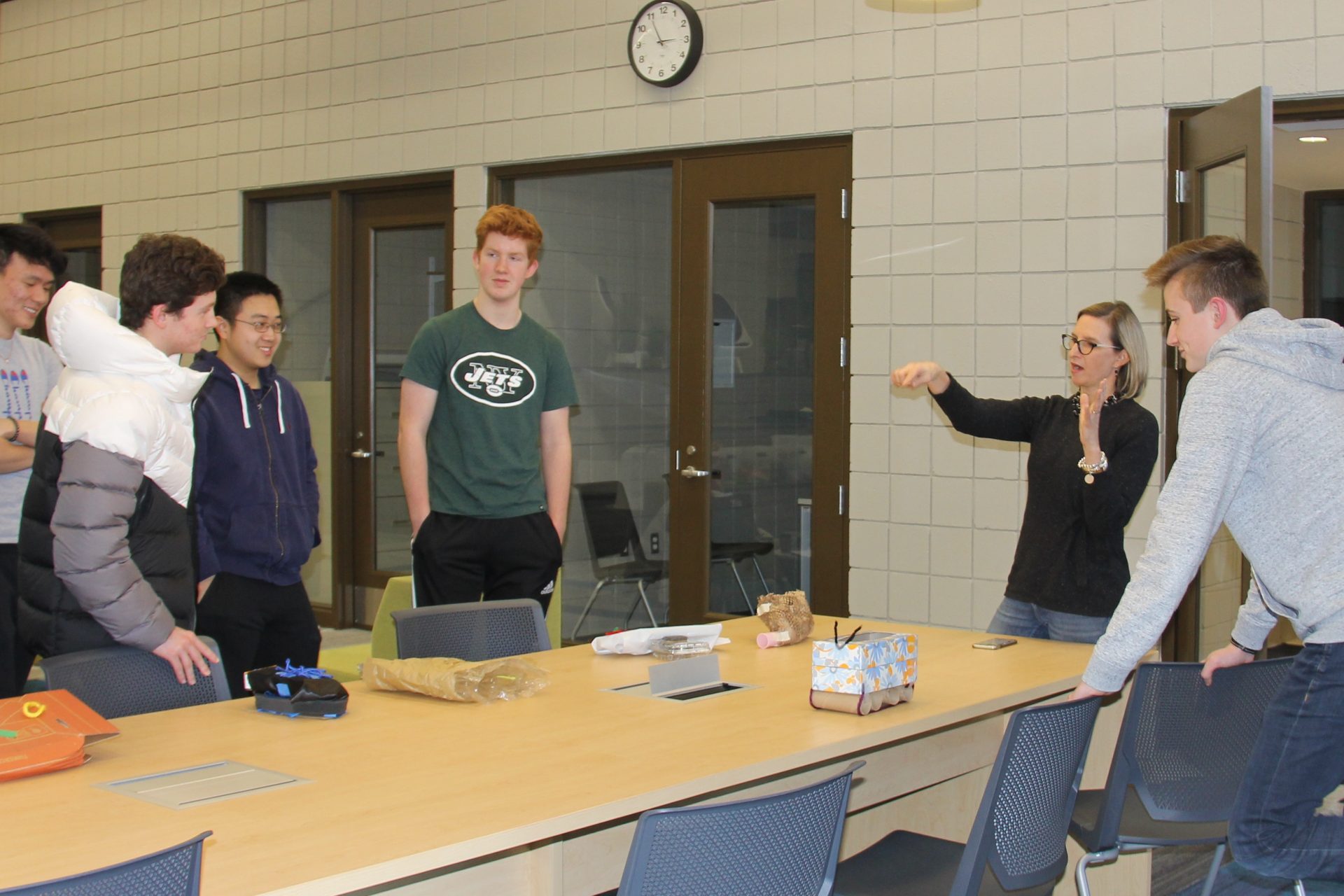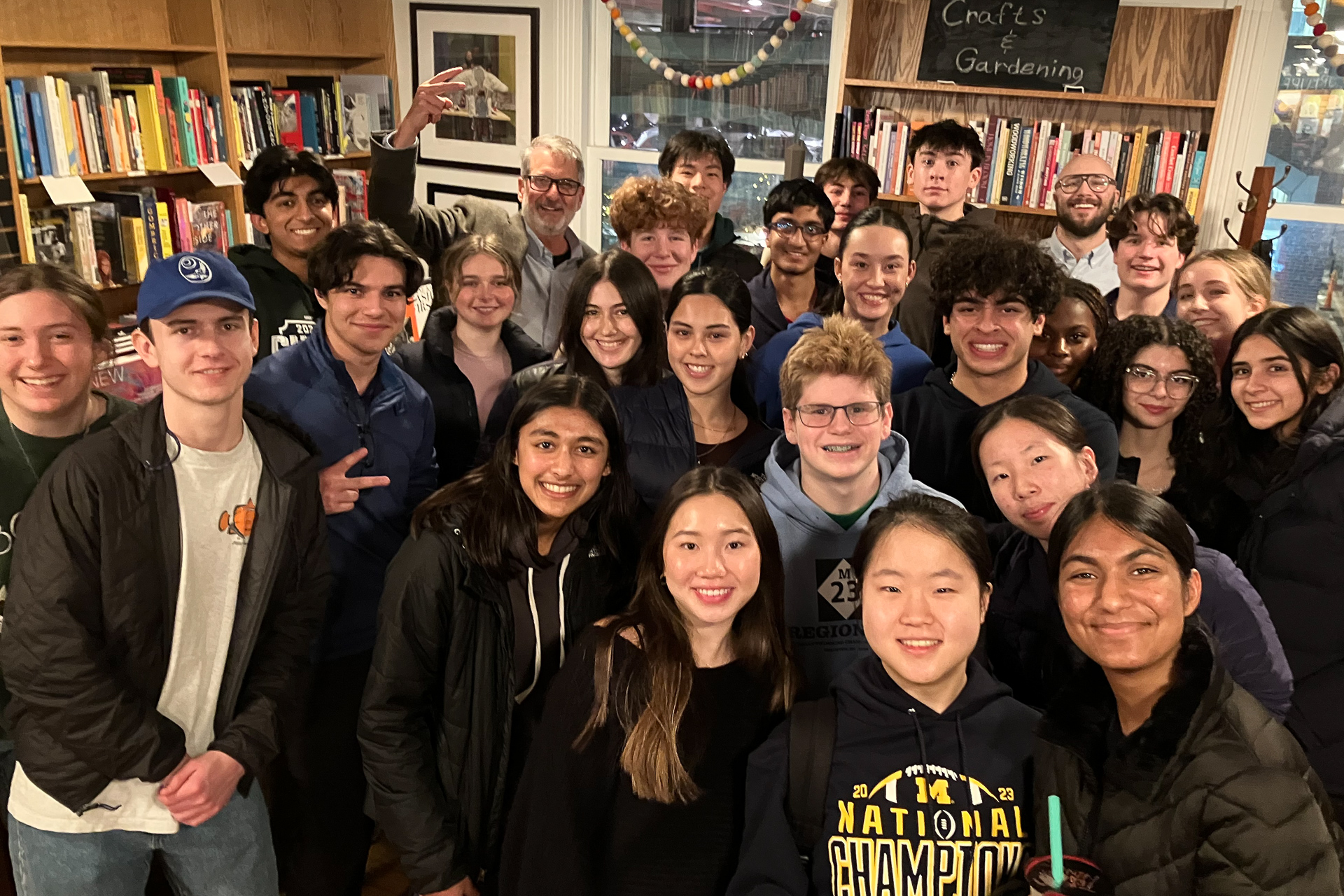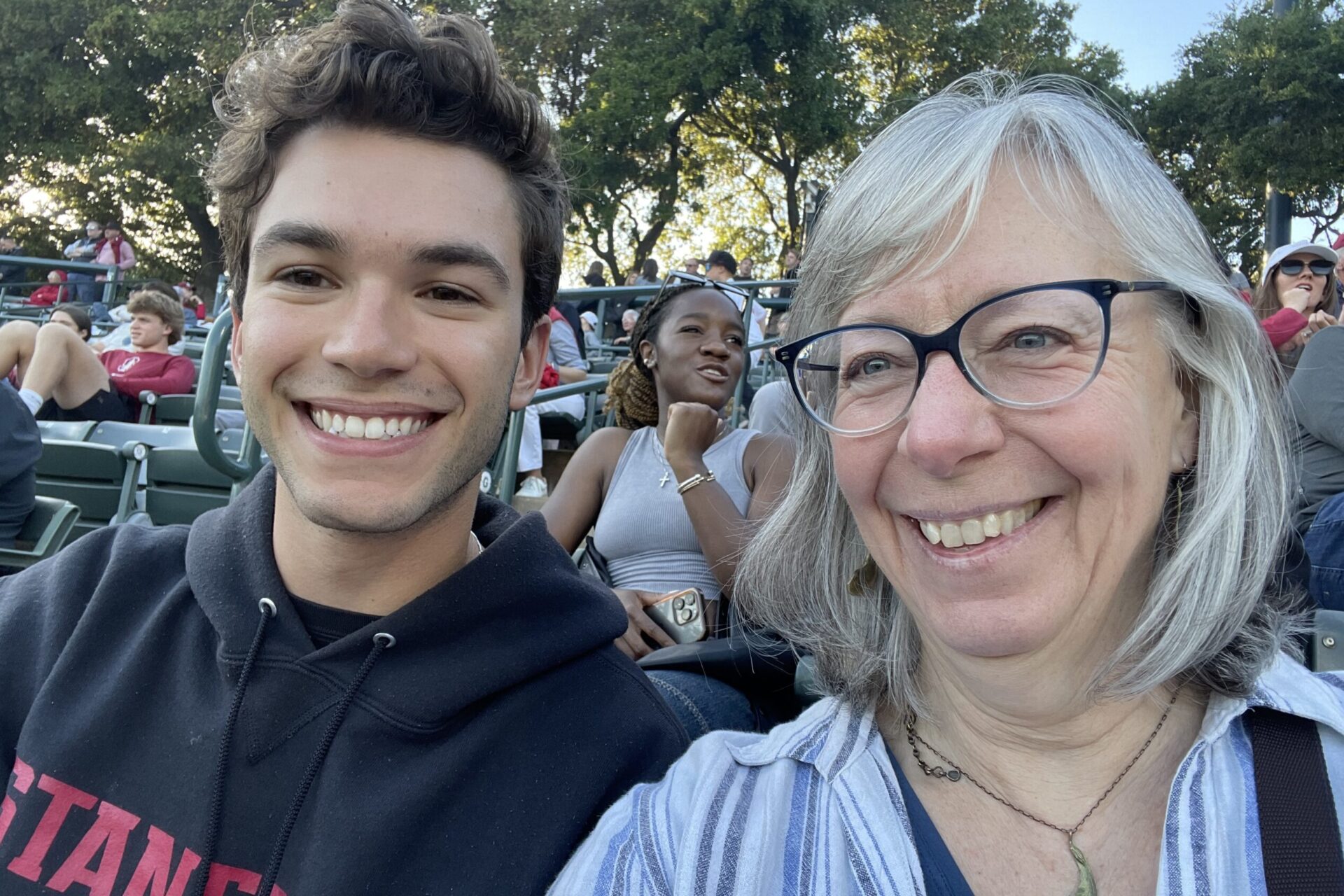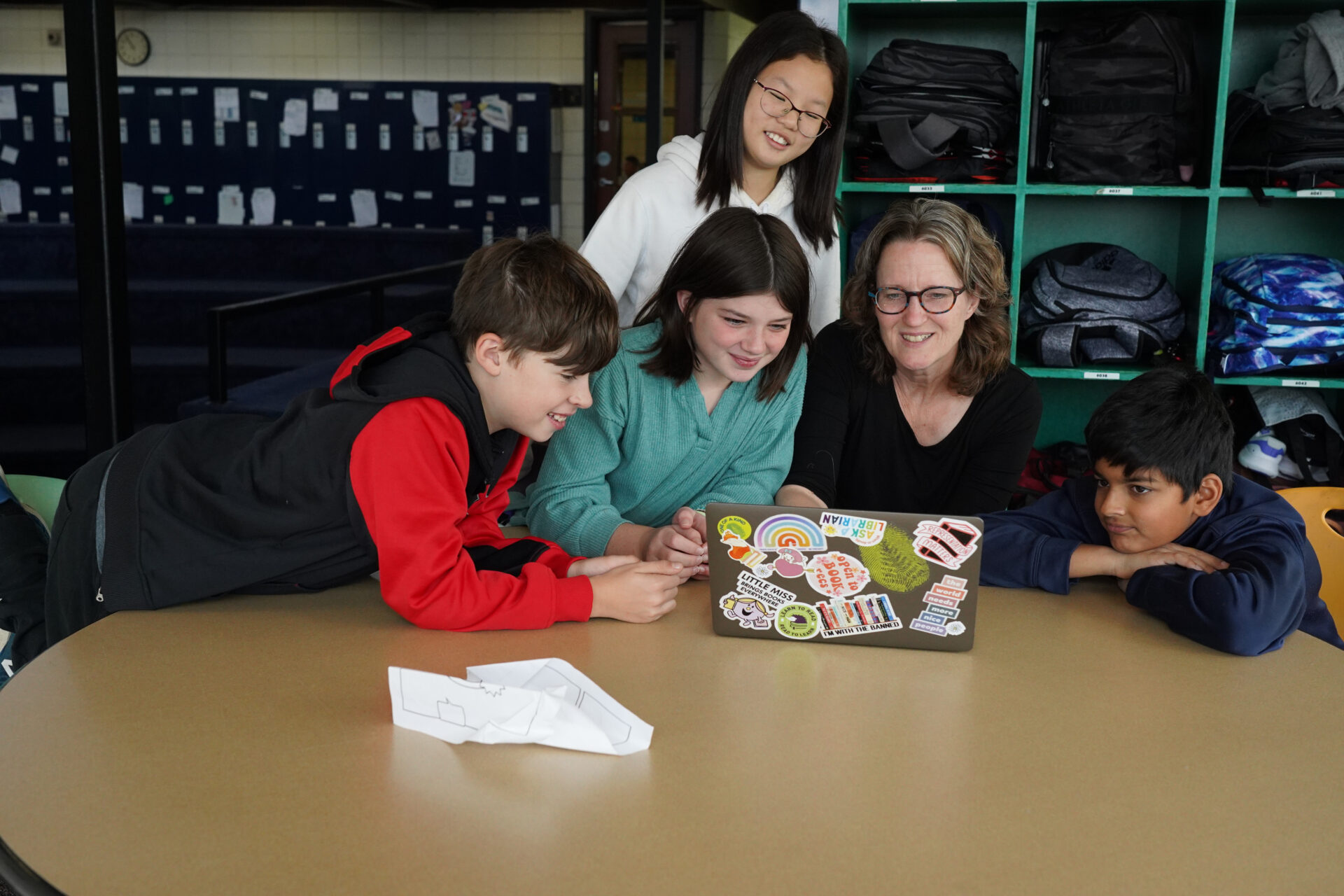R. Charles Dershimer: Design Thinking Insights at Greenhills

“Go big to be transformational.”
This was Deborah Parizek’s encouragement to Greenhills’ Applied Engineering Design students as they brainstormed ideas for how to design better ways to help their student-partners’ carry their important items with them throughout the day. Ms. Parizek, executive director at Henry Ford Learning Institute (HFLI.org), visited campus last month as a guest facilitator of a workshop that introduced Greenhills upper schoolers to the tools and process of Design Thinking.
Damian Khan and I invited Ms. Parizek in during the first week of our second semester course to inspire students to embrace the idea that engineers should be curious and that engineering is about creatively solving problems to meet people’s needs. Ms. Parizek brings the mindsets, methods and tools of Design Thinking to a range of learners around the world, including teachers in schools from Virginia to Washington, university faculty who are designing new programs, engineering students in Romania seeking creativity skills, and future leaders in Ford Motor Company’s 30 Under 30 Program.
Throughout the high-energy “rapid cycle design challenge” workshop, which was held in the school’s newly redesigned Wege Gebhardt Library, our students were introduced to a collection of mindsets, methodologies and tools that allowed them to creatively explore problems, and then reframe and act on the problems to generate solutions. Students were challenged to redesign how their “partner carries important stuff” with them throughout the day. Each student worked to gain empathy for the needs of a classmate by using interviews to learn what “stuff” was important to that individual. Ms.Parizek guided students in techniques to support their questioning, modeling the language students should use to interact with each other encouraging them to:
- ask questions, without offering solutions;
- seek what is not yet answered;
- think about how to discover something that your interview partner isn’t even aware of;
- ask for a story to move beyond their obvious ideas;
- and ask for emotions to have a different impact.
This interviewing/storytelling segment was followed by a period of retrospective reflection where Ms. Parizek helped students synthesize what was learned into “needs and insights” statements to address their partner’s challenges. This quiet stage of focus soon shifted into energetic and “radical ideating,” where students generated varied and divergent ideas that might meet their partners’ needs. A high-spirited Motown soundtrack kept everyone’s heart beating fast, moving blood to their brains to support creative thinking and brainstorming. The first day ended with a room full of ideas for how to proceed next.
The second day of the workshop started off with Ms. Parizek engaging everyone in a game to promote creative thinking. Student pairs were asked to brainstorm as many uses as possible for a broomstick, and the team who had the most number of ideas would win a dollar. In minutes, more than 25 unique ideas were formed! I’ve learned that games like this are important components when framing a context for divergent thinking. They help people remember to adopt a creative mindset that involves deferring judgement, being curious, and listening to and building on other people’s ideas. The Harvard Business Review (January 4, 2019) recently reported on Stanford University research that examined the relationship between creativity and mindfulness techniques for engineering students. The authors noted how mindfulness can support us with navigating the ambiguity of creative experiences by providing techniques for being “present in the moment.” Games that involve brainstorming can help us relax and reach a mode of acceptance that supports an openness around working to prototype solutions. The researchers noted that their study results indicated a clear relationship between ‘mindfulness and enhanced divergent thinking’ and suggested that mindfulness practice may improve the originality of ideas, but not the quantity of ideas created in an idea generation task like the broomstick game. Greenhills students experienced mindful play first-hand when they used a game to set the tone for working in a creative space.
Students then restarted the design challenge by sharing their ideas with each other and capturing their partners’ feedback on the five brainstormed ideas for carrying important stuff. In the spirit of iteration, students used the feedback and their partners’ enthusiasm and excitement around these new ideas to sketch out one big idea as a solution to meet their partner’s needs. They then jumped into action to make the idea using prototyping materials, and transform their 2D ideas into 3D proto-reality! Fast-paced music accompanied the building of fantastic creations: drones that follow one down the hall; simulated black holes that can hold more than their physical size; a mock-up of artificial skin that acts as pockets; or an enhanced bubble pack to slip inside an existing backpack. When the seven minutes were up, scissors had to be put down as students gathered into a circle to share out their ideas. Smiles accompanied effort as each team commented on how well the mock-ups met their needs.
In the post-session debrief back in the regular classroom, I asked the Applied Engineering Design students to reflect on what they noticed and wondered about the rapid cycle design challenge. Comments addressed timing, with students asking “I wonder why the design part of the project took the most time?” and noting “how quickly we are able to come up with mostly different ideas in a short amount of time.” Students addressed the role of process with “I noticed that the process is more systematic than I expected” and “I wonder how what we talked about works in the larger scale design process in corporations – how do such large groups of engineers communicate their ideas in a way that they can collectively come up with a single solution?” Reflections demonstrated how the design thinking activity addressed one of Damian’s and my course goals of helping students learn to be more mindful of the design process. According to one of the sophomores, “I noticed that some ideas that are ‘crazy’ can actually be useful, because you can build off of them in order to make something innovative.” Other comments demonstrated thoughtful reflection on possible boundaries to the creative process, with students asking “How does one know what is too far out of reach with making a design?” and ”How can they draw the line between possible and not possible while maintaining creativity?” One senior wrote, “I noticed that, if need be, we can be incredibly innovative and creative.” It was nice to see connections being made between this class activity and the Greenhills mission of “educating curious, creative, and responsible citizens.”





